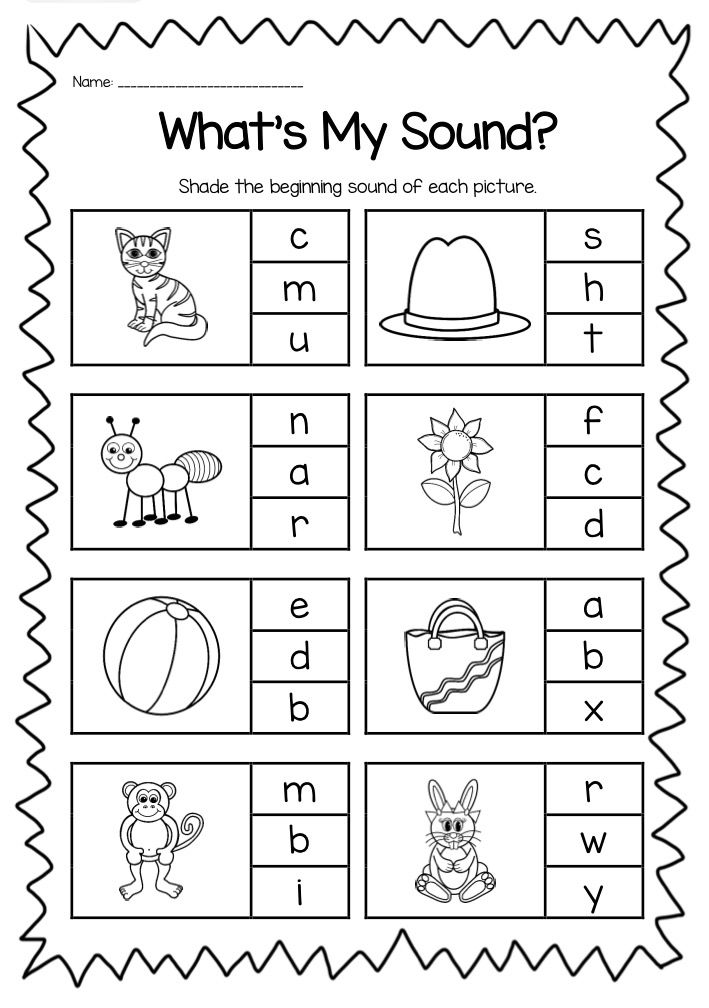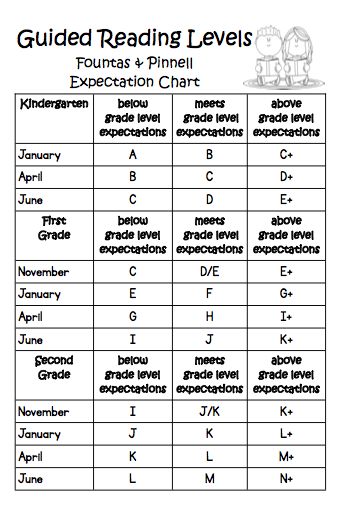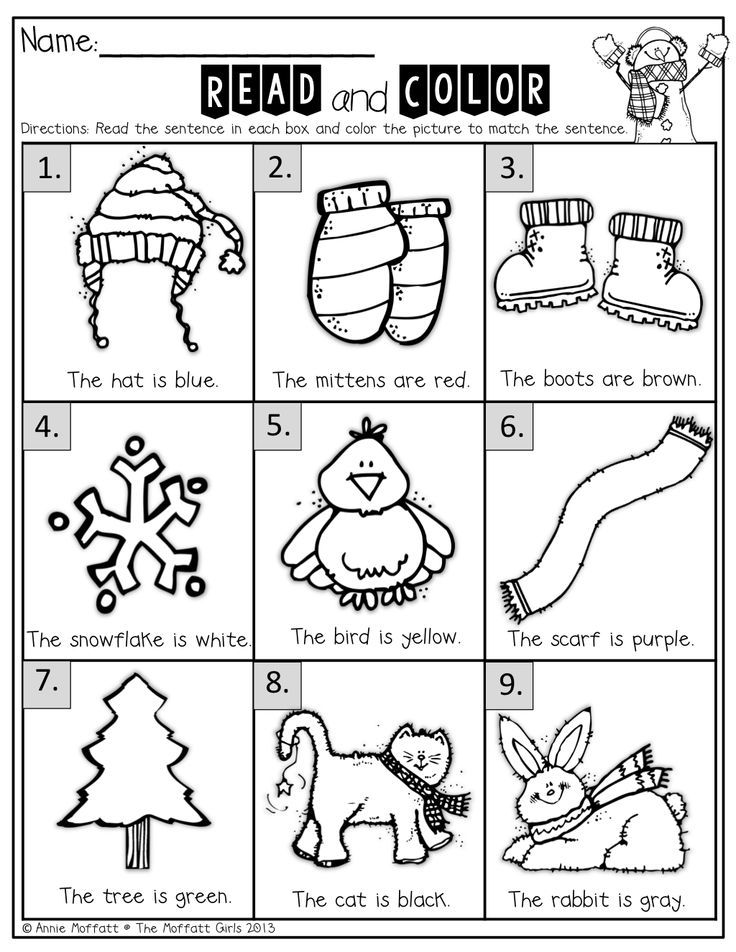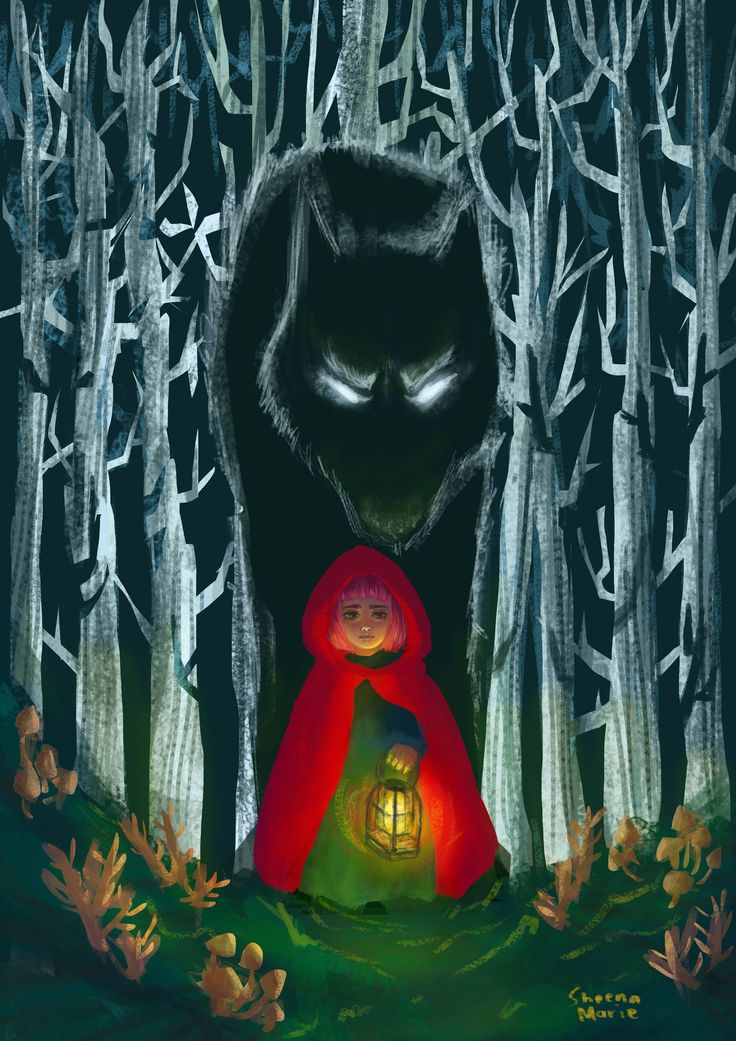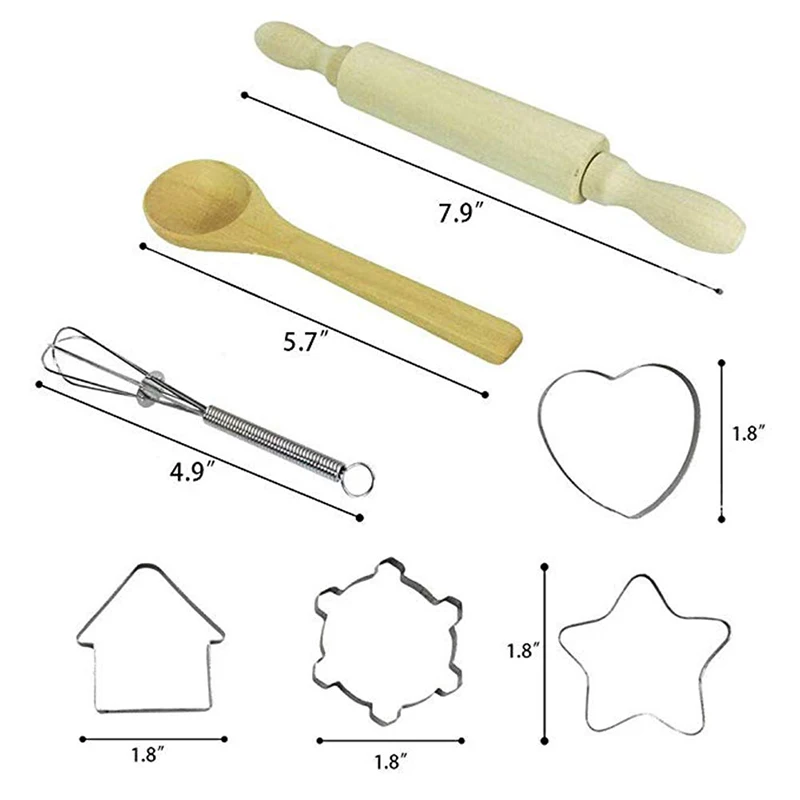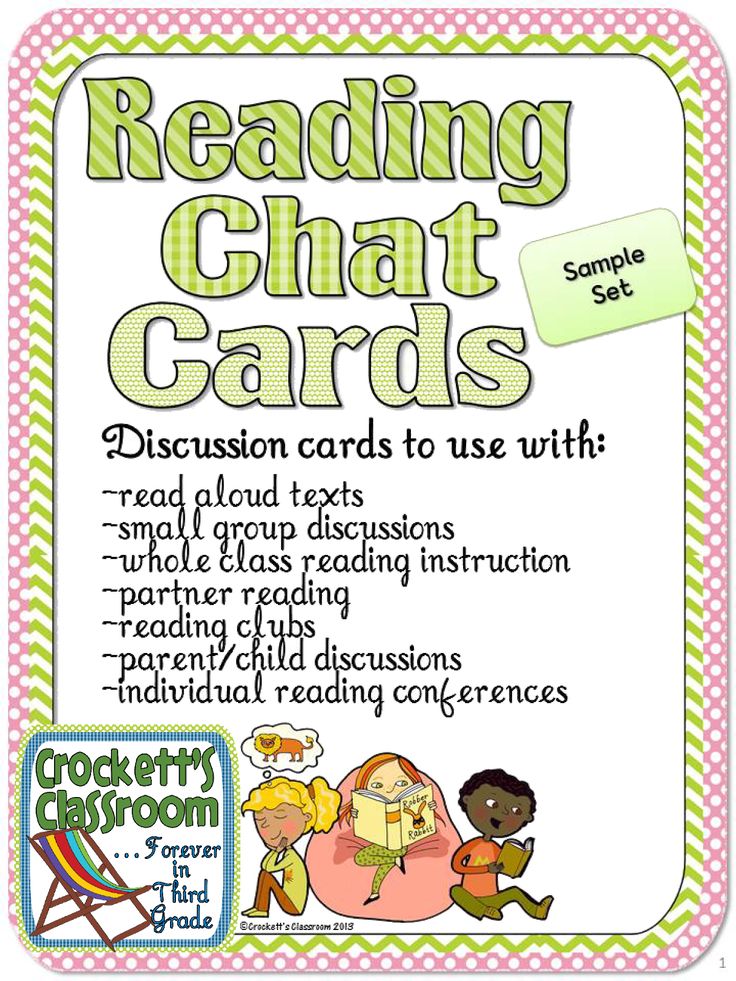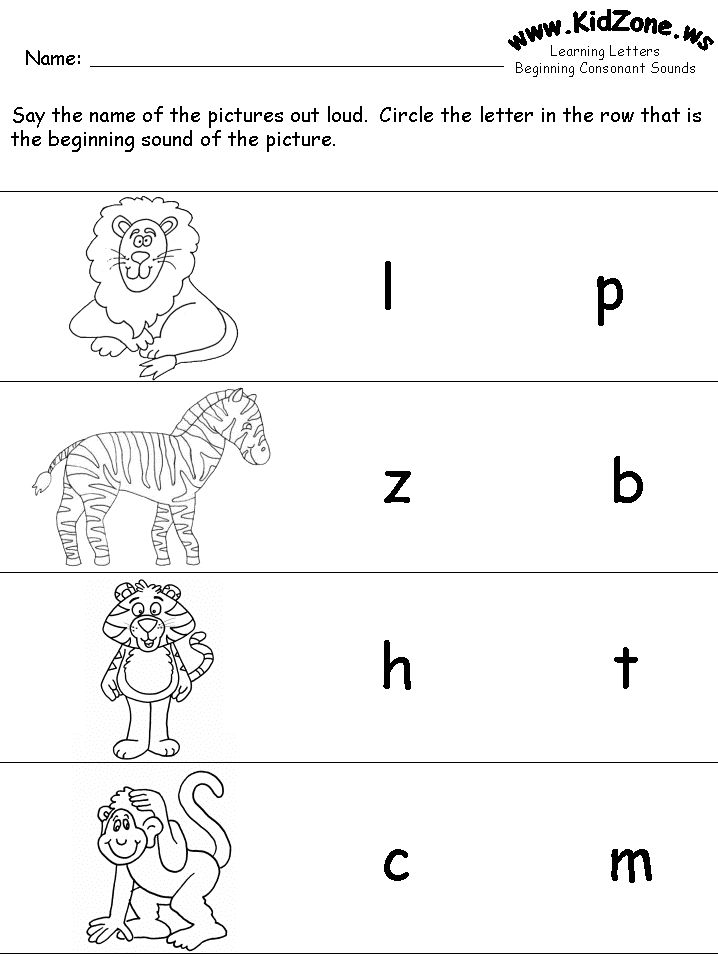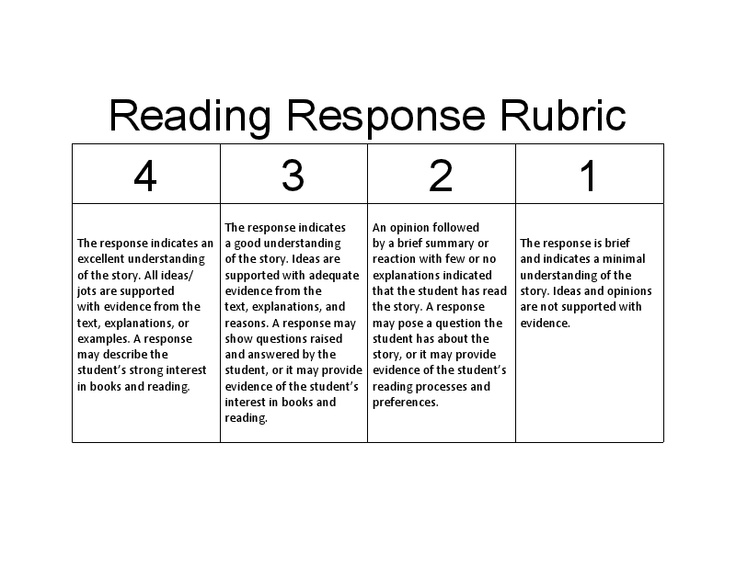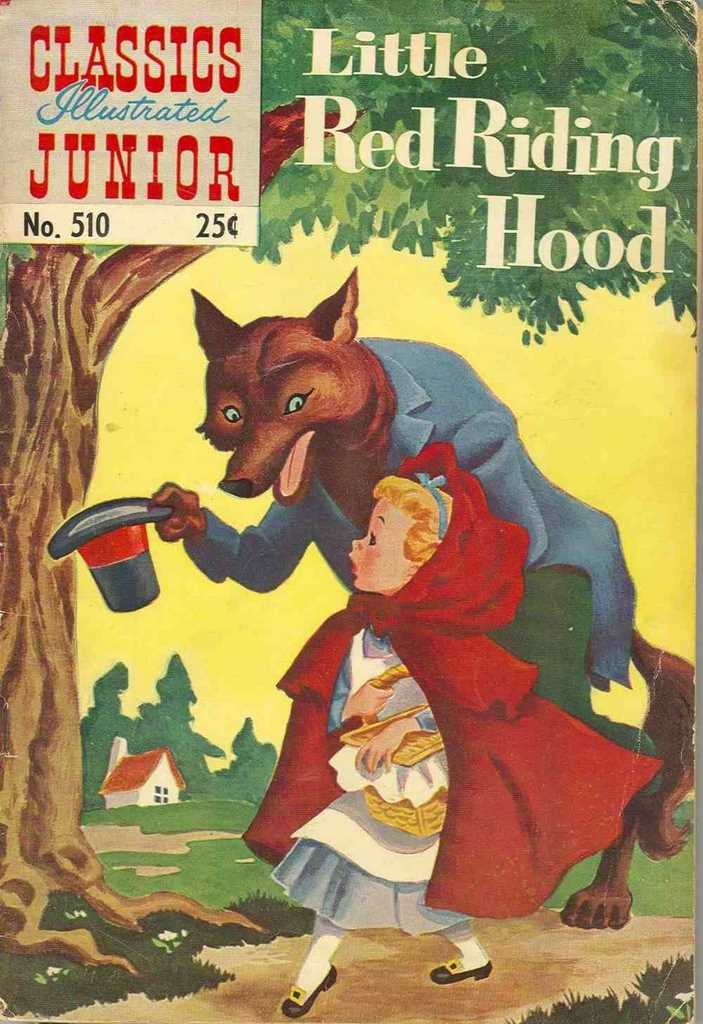Preschool alphabet sounds
Learning Letter Sounds - PreKinders
By Karen Cox | Affiliate Disclosure | Filed Under: Phonological Awareness
These games help pre-K children practice Letter Sound learning in a fun, hands-on way.
Sound Cups
Use 26 disposable clear punch cups and label each cup with a letter. Letter cup labels can be downloaded below. Collect a set of small trinket objects (you can ask parents and friends to send things in), such as plastic lizard, small block, watch, plastic frog, bandaid, necklace, button, dice. Place the trinkets in a basket. Children sort each trinket into a letter cup by its beginning sound.
You can use all 26 cups at one time, or select 3-4 letter cups at a time for children to focus on. When searching for items to go in the cups, look for dollar store mini toys (especially packs of animals and bugs), look at doll house miniatures, browse craft stores for mini items.
Download: Letter Cup Labels
Erase the Sound
Draw a picture on a dry erase lap board. In the example below, I drew a snowman. Call children up one at the time to erase something that begins with something in the picture. In this picture, children can erase something that begins with H (hat), something that begins with B (buttons), something that begins with N (nose). Continue until everything is erased.
Mystery Bag
Place three objects beginning with the same letter in a bag (such as ball, bug, and button for B). Have a child pulls each item out of the bag and name each item. Have the class guess the “mystery letter”.
Guess Who?
Say three words and have the kids guess whose name begins with the same sound as those three words. For example, call out:
- lake
- lemon
- lamp
The class would guess Levi. If you have more than one child in your class (maybe Levi, Lucy, and Layton) who start with that letter sound, the class can name all of them.
I have prepared a list of words for each letter that you can use for your students.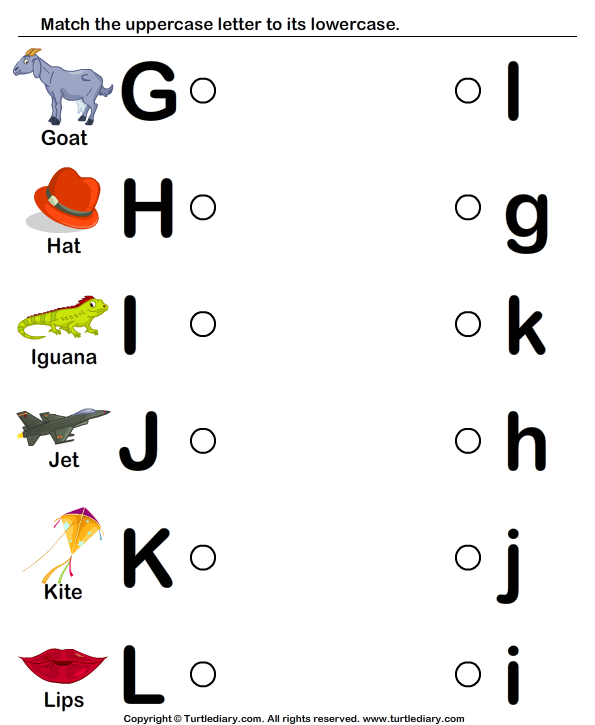 Download the list below.
Download the list below.
Download: Beginning Letter Sounds List
Monster Names
Have kids stand, stomp, and growl when you say their “Monster Name”. Replace the first letter of each child’s name with the letter M. For example, Braden’s name would become “Mad Monster Maden” and Ashlyn’s name would become “Mad Monster Mashlyn”.
Say Two Words
Say two words, and have kids stand up if the words begin with the same sound. Have them sit down if they do not. For example,
cat – cow (stand up)
hat – goat (sit down)
Letter Sounds Listening Games
Children listen for beginning sounds in words and use bingo markers to stamp a letter each time they hear the letter sound. Get the printable game here: Letter Sounds Listening Games.
Letter Sounds Activity Cards
Children look at the picture, say the word, and find the letter that matches the beginning sound. They mark the cards by clipping it or marking it with a chip. Get the printable game here: Letter Sounds Activity Cards.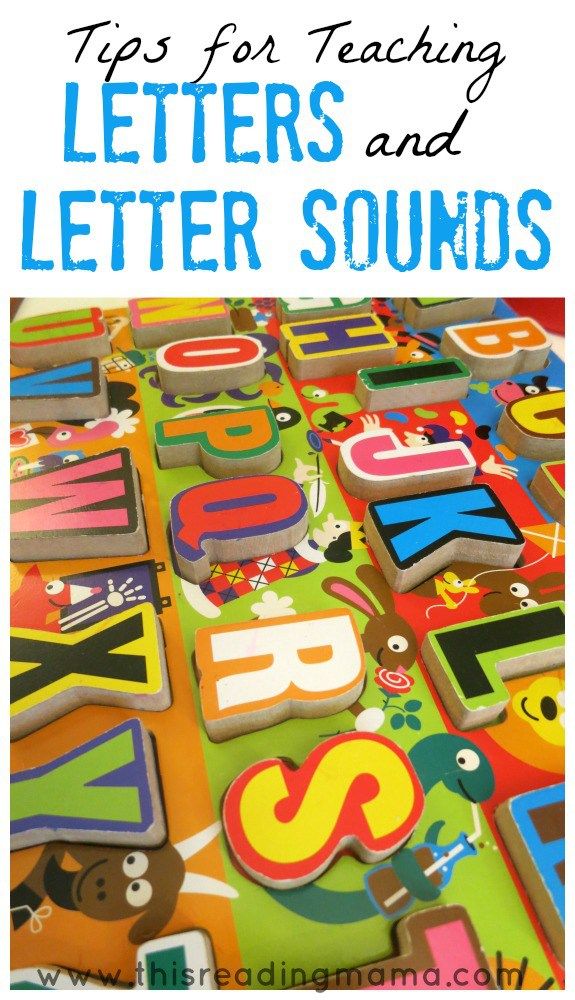
Letter Tile Mats
Children match letter tiles to the pictures on the mats by identifying the beginning sound of the words. Get the printable game here: Letter Tile Mats.
More Resources
These are available in my shop.
About Karen Cox
Karen is the founder of PreKinders.com. She also works as a full-time Pre-K teacher in Georgia. Read more...
SEARCH
Try These 10 Fun Phonics Activities to Teach Letter Sounds to Children
What is phonics?
Phonics is the relationship between letters and sounds as well as the understanding of how those sounds connect to form words.
For instance, the /c/ sound, the short /a/ sound, and the /t/ sound blend together to form the word cat.
What does the research say about teaching phonics?
Research indicates the importance of teaching children phonics as a preliminary step for learning to read.
Research also suggests that systematic instruction which incorporates wordplay (manipulating letters/sounds in words to change the word), writing words, and using manipulatives such as magnetic letters to create words are all effective strategies for teaching phonics.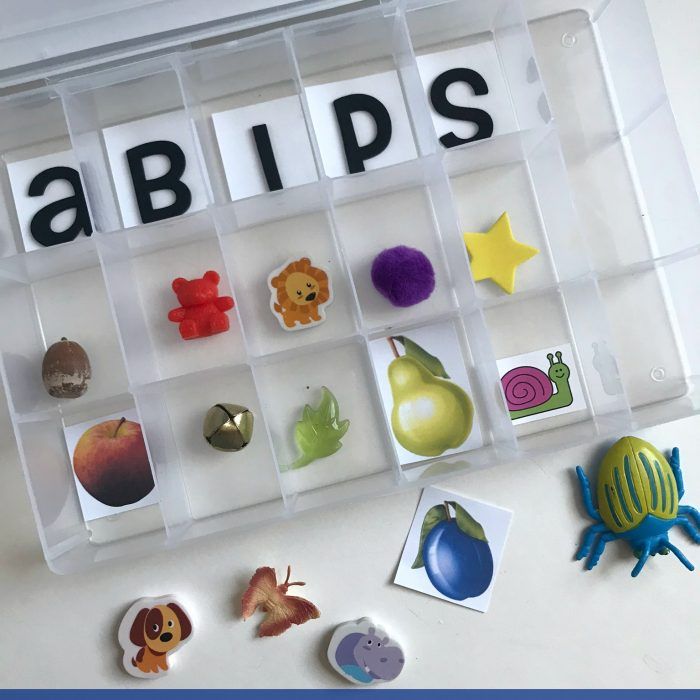
Additionally, research demonstrates the benefits of applying a multi-sensory approach to phonics instruction.
A multi-sensory approach incorporates sight, sound, touch, and movement into instruction. This helps address a variety of learning modalities, enabling students to better absorb the information.
Ten Fun Research-Based Phonics Activities to Teacher Letter-Sounds
1. Play the game “I Spy.”
In the game “I spy” you pick something that you see and don’t tell the child what it is. The child has to guess what you see.
Here is how you can use “I Spy” to teach letter sounds (phonics):
Let’s say you see a book in the room: You can say: I spy something that starts with the letter B or I spy something that ends with the letter K.
After your child guesses what “you spy” have them tell you the sound the letter makes. If your child cannot guess what “you spy” or does not know the letter sound, provide them with assistance.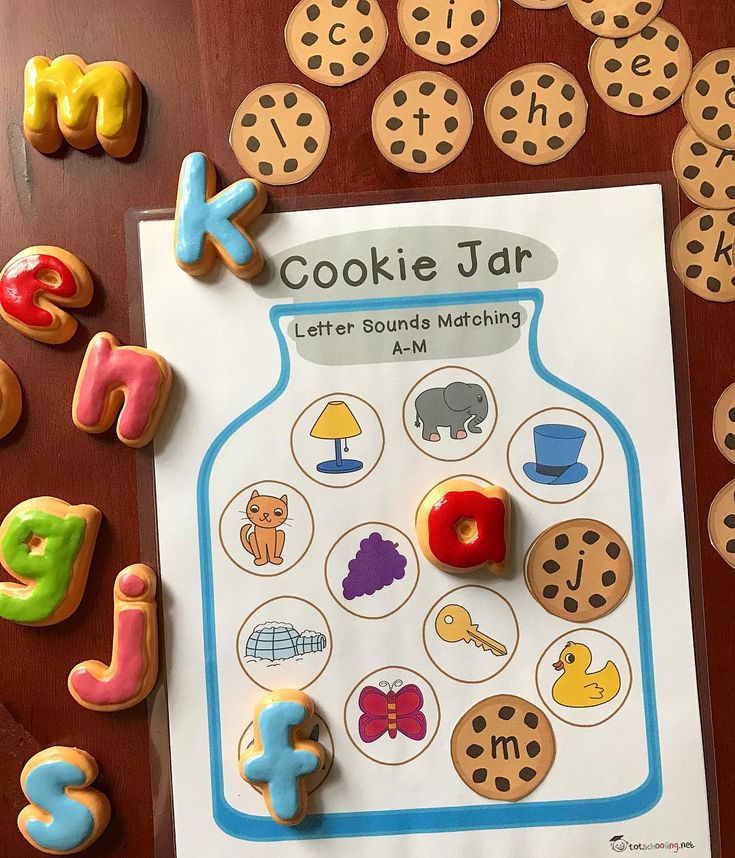
You can also do the same thing using letter sounds. For example, if you see a book, you can say “I spy something that starts with (make the sound for b)” or “I spy something that ends with (make the sound for k).
After your child finds the object, have them tell you what the first letter (or last letter) of the object is. Take turns with your child. First you spy, then they spy, or vice versa.
2. Put letters on flashcards for a fun activity.
Put one letter on each card as shown below (create upper case and lower case cards):
Here is a sample activity:
Pick three to four-letter words and scramble them up. For example, if the word is pig, put the letters out-of-order (e.g., ipg) on the table in front of your child.
Put the letters one to two feet in front of your child so she has room to work. Next, give them a sheet of paper with three (or four) spaces for letters on it, like so _ _ _.
Then tell them the word or show a picture of the word and give the instruction (e.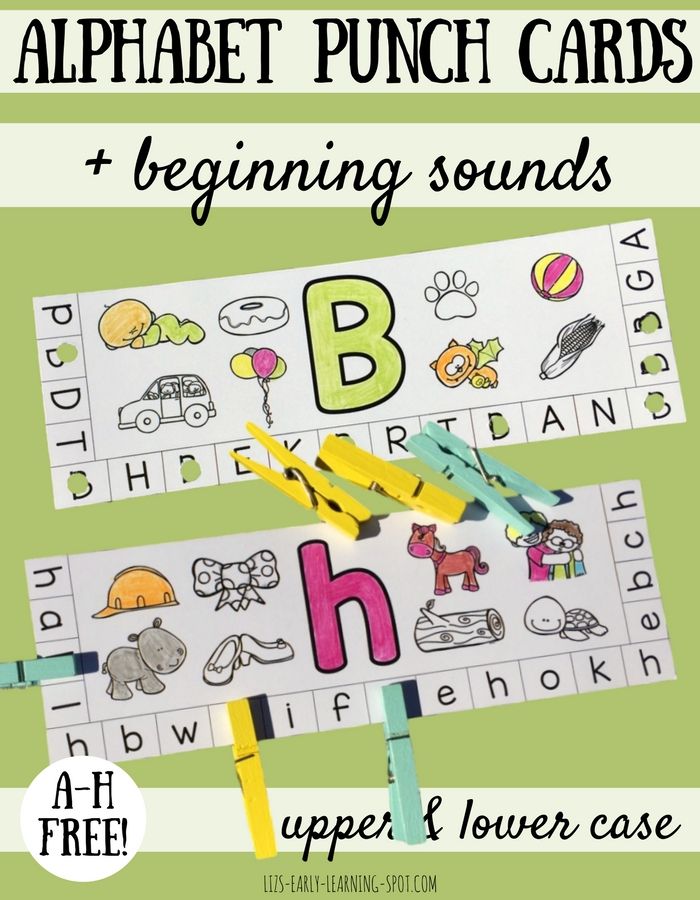 g., “I want you to make the word pig on the lines below, using the letters above).
g., “I want you to make the word pig on the lines below, using the letters above).
If you have Magnetic Letters, you can use these as well. You can also encourage your child to write the letters in with a pen or pencil.
You can do word families to help your child understand that many words are spelled the same way, with only the first letter different. So after pig, try big, wig, and rig.
Rhyming practice is another helpful strategy when teaching kids about letter sounds.
3. Play letter-sound Go Fish.
Make doubles of flash cards. Each player gets five cards and the rest of the cards go in a pile in the center of the table.
Player 1 calls out a letter-sound and asks if player 2 has a match.
If they don’t have a match, tell them to “go fish” which means to choose from the pile. See more detailed rules for how to play Go Fish here.
4. Make your own phonics Bingo game.
Draw a grid or make one on the computer like the one below.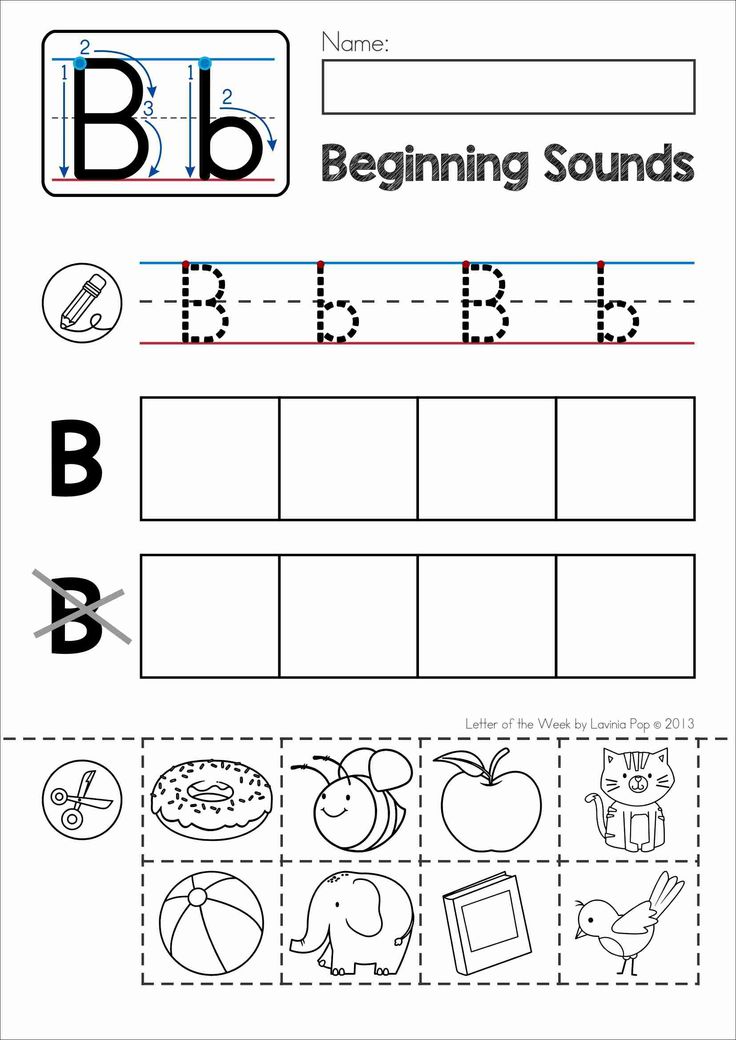 (You can also print out a large version of the one below here). You can find more blank grids here).
(You can also print out a large version of the one below here). You can find more blank grids here).
While the grid above has 25 boxes, you can play phonics Bingo with 9 or 16 boxes also.
Here are four options for getting pictures into the boxes:
Option 1 – Draw something simple in each box.
Examples of simple drawings for each letter of the alphabet include an apple, a banana, a comb, a door, an egg, a feather, a girl, a hat, an ice-cube, a jar, a kite, a light bulb, a mitten, a nose, an orange, a pan, a queen, a ring, a spoon, a table, an umbrella, a vase, a worm, a xylophone (that one might not be so easy to draw), and a zipper.
Use colors to make it look fun.
Option 2 – Get images from Google Images, print them, cut them out and glue them in the boxes.
Option 3 – Go to Google Images, copy each image by hitting “control c’ or by right-clicking on the image and selecting copy, then paste each picture into each grid box by right-clicking in the grid and clicking paste or by hitting “control v.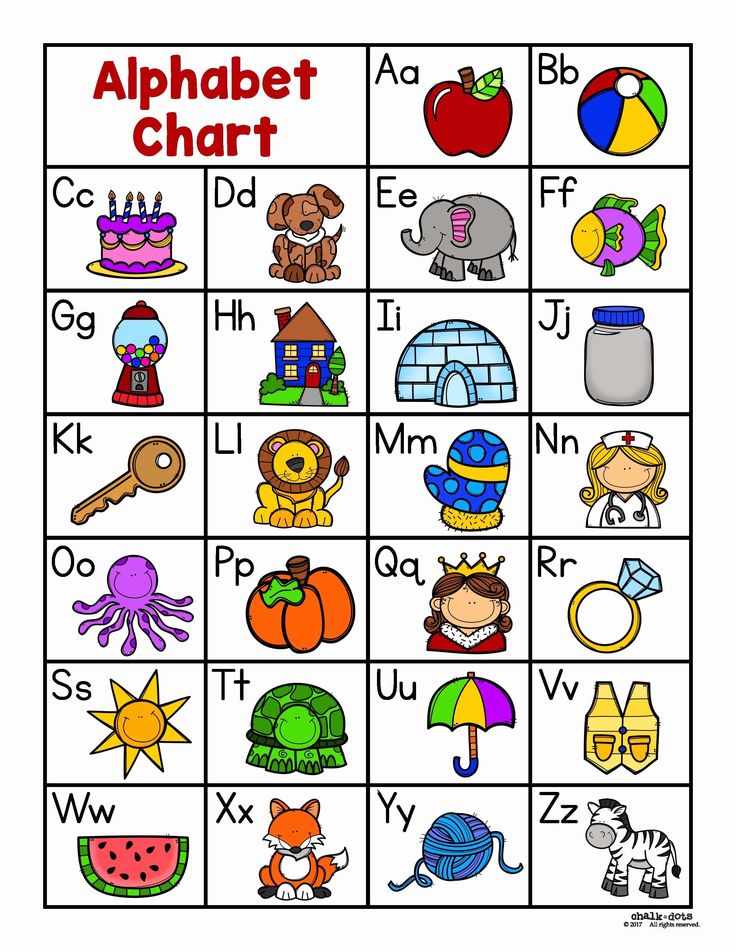 ”
”
Option 4 – Find and print out ready-made Bingo grids by doing a search for Kids Bingo Grids
You can play the Bingo game four ways:
1 – Call out a letter sound. If your child has a picture on her Bingo card that starts with that letter sound, have her put a coin, checker piece, or small piece of paper over the picture (you can cut index cards into small pieces.
This will work better than regular paper because the pieces will be heavier and stay on the Bingo card better).
2 – Call out a letter. If your child has a picture on her Bingo card that starts with that letter, have her cover the picture.
3 – Call out a letter sound. If your child has a picture that ends with that letter sound, have her cover the picture.
4 – Call out a letter. If your child has a picture that ends with that letter, have her cover the picture.
When your child fills up a row, up, down, or diagonally, she gets Bingo (she wins).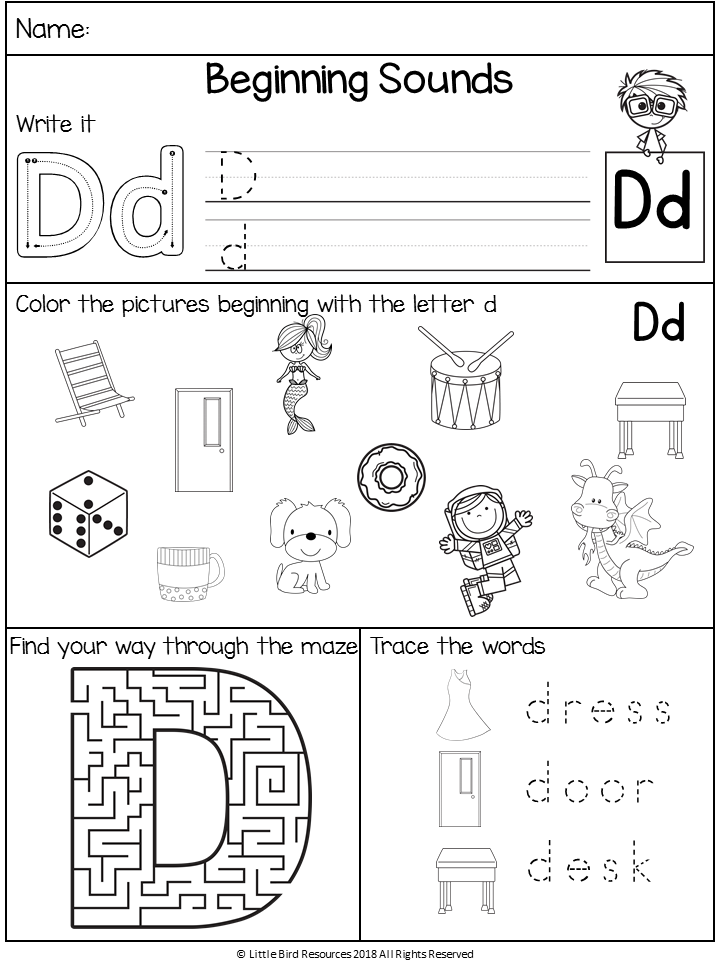
5. Make flashcards with a picture on one side and the letter the picture starts with (or ends with) on the other side
You can draw the pictures yourself or make flashcards using pictures from Google Images.
To make a flashcard from Google Images, go to the Image, copy it, “right-click” on it and click copy or hit “control c.” Then go to a word document and paste (right-click and click paste or “hit control v.”).
Then print out the pages, cut out the picture, and write the corresponding letter on the back.
If you know how to insert tables, you can put several pictures on the page in table boxes, print the page, cut out all the pictures, and put the letters on the back. Here is an example:
Show your child a picture and ask them to tell you the letter (or letter sound) it starts with (or ends with). If they are correct, let them know and show them the back of the card. If they are not correct, give them two more tries.
If they do not get the letter or sound, show them the back of the card and tell them the letter and sound (then enunciate the sound as you say the word), have them say the letter/sound back to you twice and shuffle the card back in the pile.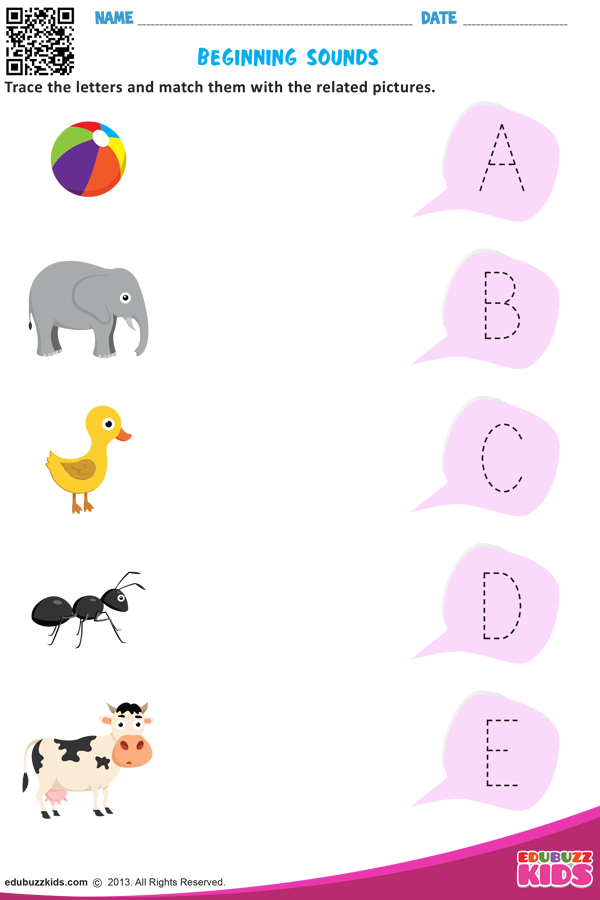 Repeat.
Repeat.
6. For children who have a lot of energy, turn a phonics lesson into a movement activity.
Tape four letters onto the wall as shown in the image below:
Call out a letter sound and tell your child to run to the letter that makes that sound, touch it and run back. Spice it up. Here are some examples:
-Hop to the letter that makes the sound
-Skip to the letter that makes the sound
-Tip Toe to the letter that makes the sound
7. For another movement activity, put tape on the floor, with a letter on each piece of tape.
Tell your child to start with their feet on a certain letter (e.g., start on letter A), then tell them to jump to different letters, using the letter sounds.
For example, “Jump to the letter that makes the sound (insert letter sound).”
See an example below:
As your child becomes more independent with his letter sounds, you can make the letters spell actual words. For the word cat, have three pieces of tape, C, A, T.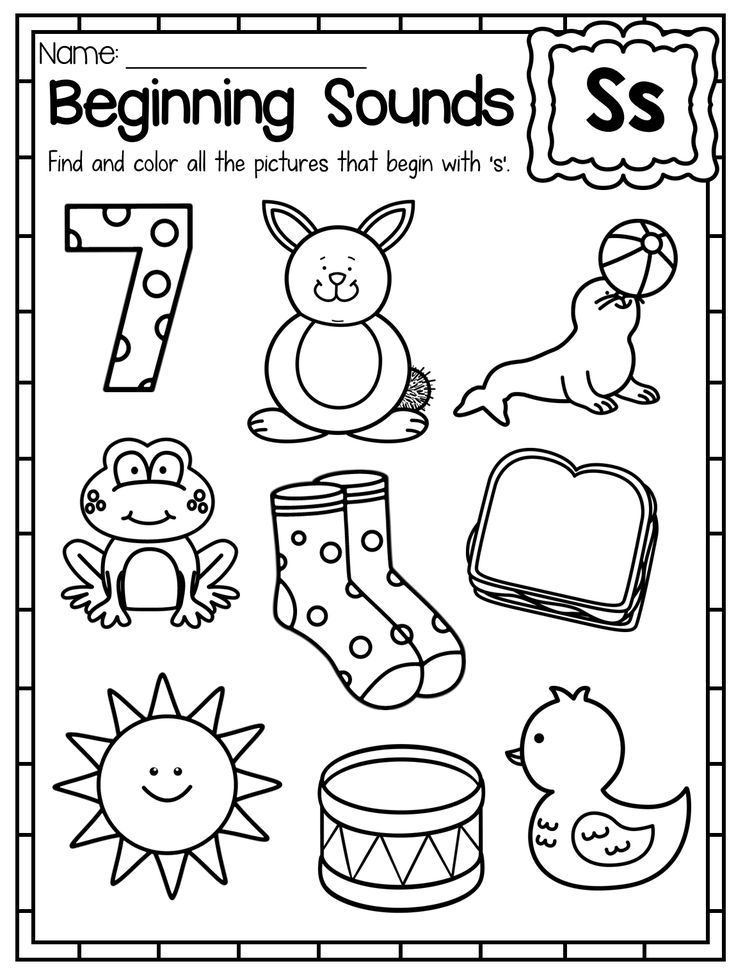
Tell your child to start at the C, then jump to the next letter in Cat, and then the last letter.
To make it more challenging, have your child spell the word backwards, by starting with the last letter and jumping in order until they get to the first letter.
Mix up the game with upper and lower case letters. The example above has three letters, but you can use as many pieces of tape and letters as you want.
Start out with a few and add more if your child is making good progress.
8. Make a worksheet, using words and pictures with your child’s favorite characters, foods, animals, etc.
You can draw the worksheets by hand or use tables in Microsoft Word. For a three-letter word, make a table with five columns and one row.
Put the picture of the word in the first box of the table (you can draw in the pictures or copy and paste them from Google Images). Put the letters in the other boxes, but leave one letter out. Have your child fill in the missing letter.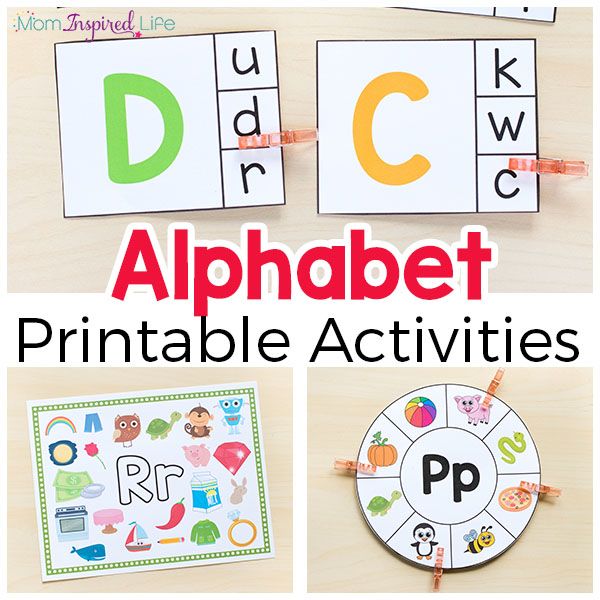
Here is an example of the worksheet:
Click here to print out your own version of this sheet.
For children who may have trouble solving this worksheet, try providing them with a letter bank to see if that helps.
See an example of a worksheet with a letter bank below.
Click here to print out your own version of a phonics worksheet with a letter bank.
9. Have your child paste letters on paper as you call out the sounds.
You can use the letter flashcards you made, like in number 2.
You can use this activity to teach your child how to spell words. Draw lines or boxes on the paper so your child knows where to paste the letters.
You can give your child the exact number of letters in the word, or throw in some extra letters to make it more challenging.
Call out the first sound in the word, have your child pick the correct letter, and paste it on the first line.
Then have them do the next sound, and so on, until the word is complete.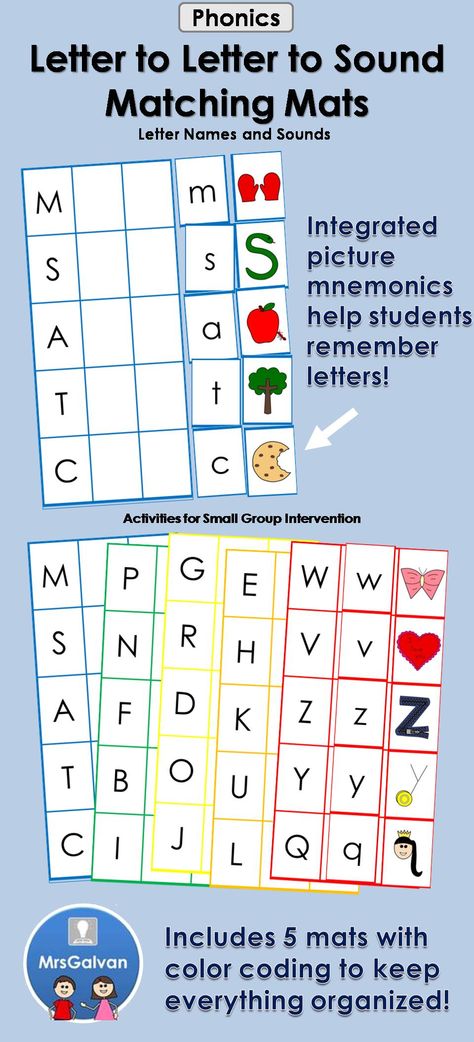
Supervise the activity, providing assistance as needed.
When your child is done, hang up their work to show them that you are proud of their effort.
You can also use this idea to teach a child how to spell their name, such as the sample in the image below.
10. Sing the alphabet sound song.
The tune is similar to the traditional alphabet song.
Here is a great example by Kidstv123. You can make up your own version as well.
What else can you do to help your child learn letter sounds?
If your child is significantly struggling with learning letter sounds or acquiring other academic skills, despite consistent practice and guidance, talk to your child’s school and/or doctor.
They can refer you to the appropriate professionals to determine what might interfere with your child’s progress and if additional strategies could help.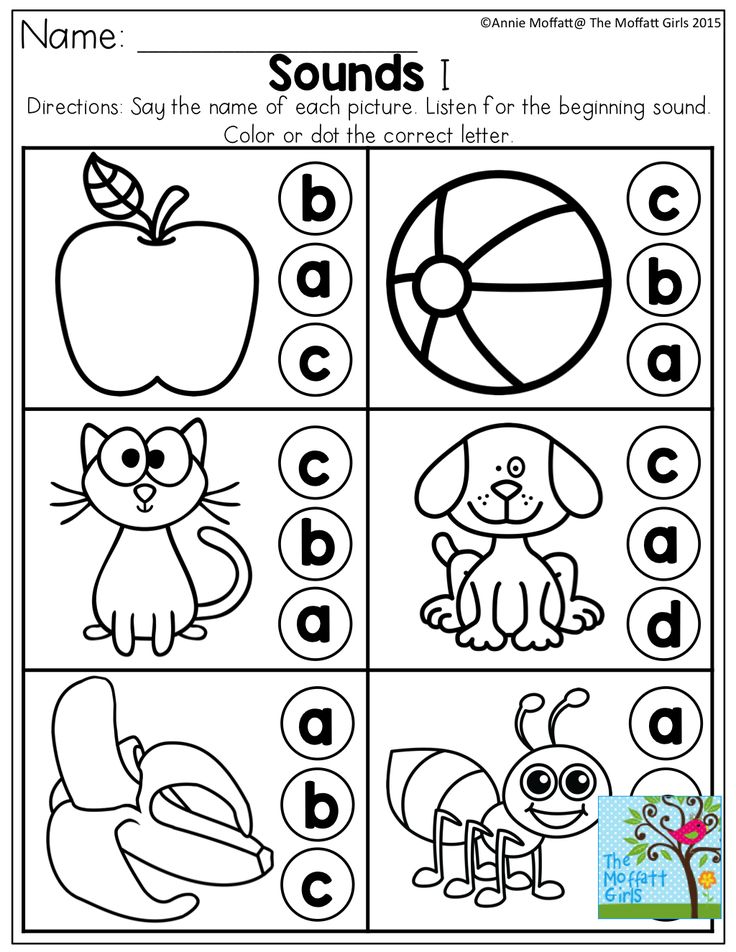
Additional Information About Teaching Phonics to Children
Keep in mind that the activities in this article are recommendations. Please do not try to pressure a child into participating in any of these activities.
This can lead to your child feeling frustrated, and possibly shying away from phonics (letter-sound) practice.
Remember to always stay calm when working with a child or student, even if you think they should be getting something that they are not getting.
If you get frustrated with them, they may start to feel anxious, angry, inferior, stupid, etc. which will lead to a less productive learning session.
Keep practice sessions short (2 to 10 minutes for younger children or children who get easily frustrated and 10 to 15 minutes for older children or children who can work for longer periods without frustration), unless the child is eager to keep going.
For suggestions on ways to encourage children to complete tasks or assignments they do not want to do, read the following articles:
- 3 Ways to Use Timers to Encourage Homework and Chore Completion
- How to Use Schedules to Improve Children’s Behavior
Video Presentation
Education and Behavior – Keeping Us on the Same Page for Children.
Rachel Wise
Rachel Wise is the author and founder of Education and Behavior. Rachel created Education and Behavior in 2014 for adults to have an easy way to access research-based information to support children in the areas of learning, behavior, and social-emotional development. As a survivor of abuse, neglect, and bullying, Rachel slipped through the cracks of her school and community. Education and Behavior hopes to play a role in preventing that from happening to other children. Rachel is also the author of Building Confidence and Improving Behavior in Children: A Guide for Parents and Teachers.
“Children do best when there is consistency within and across settings (i.e., home, school, community). Education and Behavior allows us to maintain that consistency.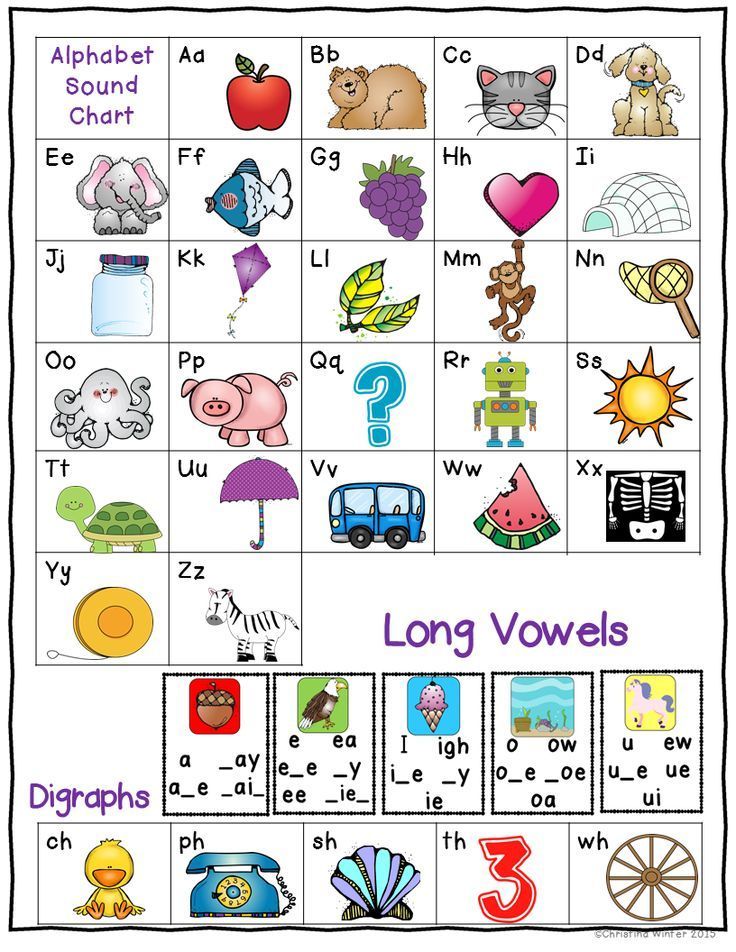 ”
”
www.educationandbehavior.com
Learning letters and sounds with children
8620
Before teaching a child to read, parents are advised to first teach the child to recognize and distinguish sounds. Some children understand the difference between letters and sounds after the first explanation, while others do not. And then the mother has to connect her imagination and all her pedagogical abilities in order to first understand herself, and then explain to the child why to distinguish between sounds and letters and how to do it.
It is necessary to understand the following pattern: there are many more sounds than letters, sounds are more important than letters, letters in themselves do not mean anything, and all qualities, for example: sonority, softness, etc., are related to sounds. One letter can represent several sounds. Therefore, we begin to learn to speak and read precisely with sounds.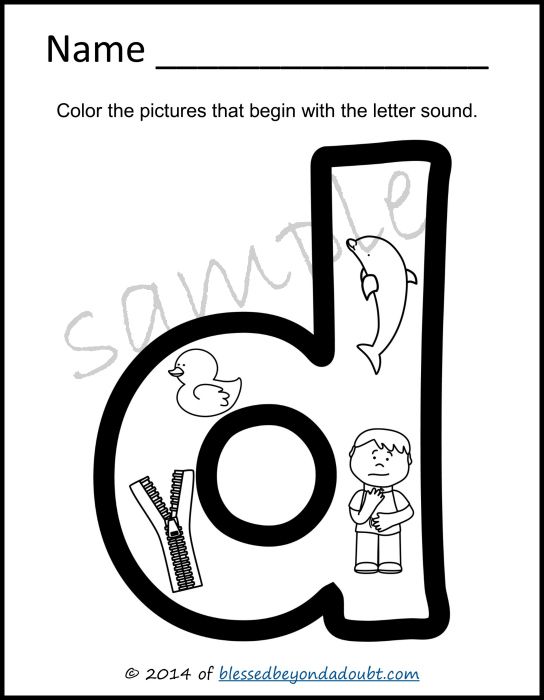
Tell a kid a story:
“People lived in ancient times. They already knew how to speak and therefore loved to tell each other fairy tales and sing songs. But everything they told was quickly forgotten, because people did not know how to write. Fairy tales and songs were so interesting that a person wanted to remember them for a long time. And then people came up with special letter icons. The letters denoted the sounds that people uttered when telling a fairy tale. So the ancient man began to write down his fairy tales with the help of letters. Therefore, letters-icons now live in books, but they are always silent until you want to read them aloud. And as soon as you want to read a letter, sound will immediately appear. Sound and letter are the closest friends and cannot live without each other. A letter without a sound is silent, and a sound without a letter immediately disappears.
There will be 33 houses in the city, because there are 33 letters in the alphabet.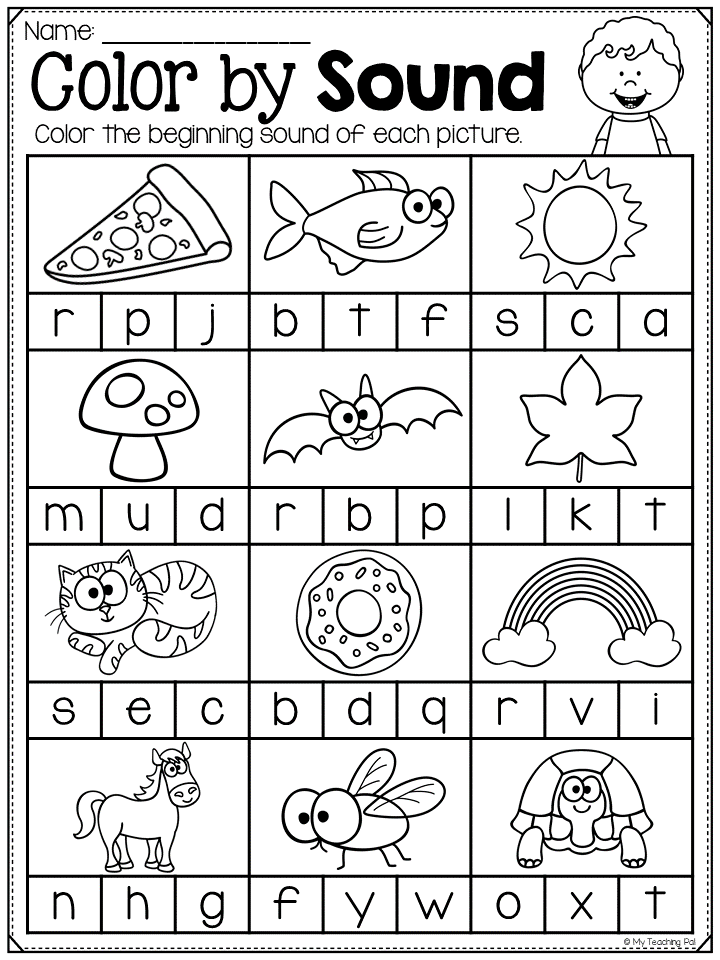 A river will flow through the city, which will divide it into three parts. One coast is called "Vowers", the second - "Consonants", and empty houses are built on the third coast. However, houses will be built in the city not only on the shore, but also on the river. Floating houses are special. They can be painted in two colors, and empty houses in one gray color.
A river will flow through the city, which will divide it into three parts. One coast is called "Vowers", the second - "Consonants", and empty houses are built on the third coast. However, houses will be built in the city not only on the shore, but also on the river. Floating houses are special. They can be painted in two colors, and empty houses in one gray color.
Houses in the city are divided into three types: with two tenants, with one and empty houses.
On the bank of vowels there will be 6 single houses: a, i, o, u, s, e.
Houses were built on the bank of consonants, where 2 sounds live at once - hard and soft: b-b, v-v, g-g, d-d, z-z, k-k, l-l, m-m, n -n, p-p, r-r, s-s, t-t, f-f, x-x, and single houses: f, c, w, d, h, u. In total, 21 houses were built on the bank of the consonants.
Suitcase houses will live on the river, there are only 4 of them. Two sounds Y-E live in the house E, sounds Y-O live in the house YO, in the house Yu - Y-U, in the house I - Y-A.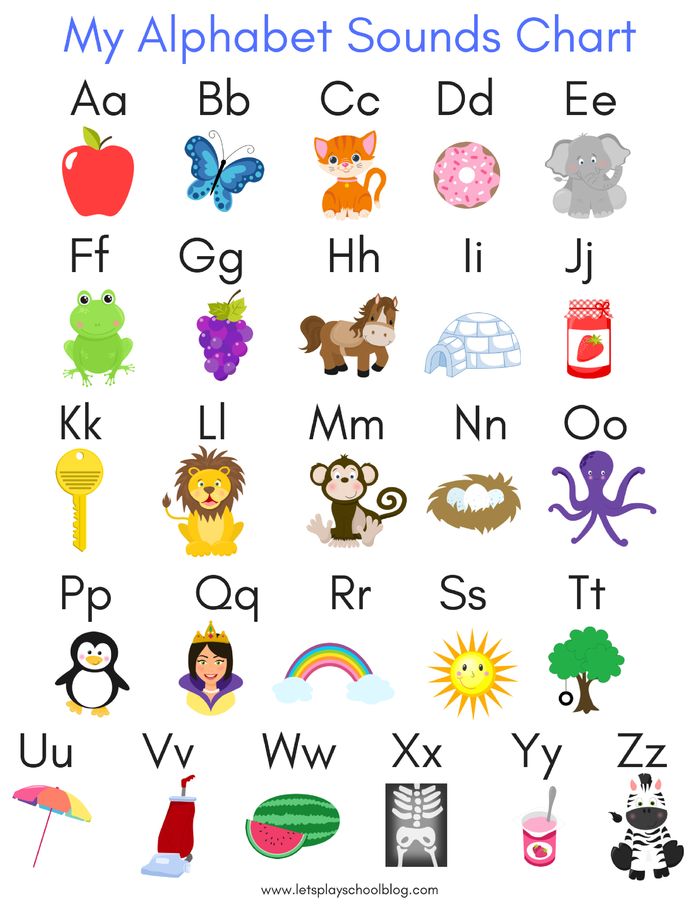 These houses were built on the river because vowels and consonants coexist in them.
These houses were built on the river because vowels and consonants coexist in them.
There are empty houses on the third bank: b sign and b sign. Nobody lives in these houses. Therefore, these letters do not have sounds. They are only for writing.
Play with the drawn map.
Discuss with your child in the following sequence: the letter B is the house of two friends: a large and hard sound B and a small and soft sound b. Compare how the letter B sounds, for example, in the words Bom and Bim. (In the word Bom we hear a hard sound B, in the word Bim - a soft sound b).
When examining a book, ask: “Where is the letter M in the word BEAR? And what sounds live in the house-letter M?" The child must remember the map or directly examine it with you at this moment and show with a finger that sounds live in this house: big and hard M and small and soft m.
When studying consonants, call them by the sound they denote, i.e. not "me" or "em", but "m". Otherwise, later it will be very difficult for the child to learn how to combine letters into syllables and words.
The ratio of sounds and letters is a rather abstract thing for kids. And it will be easier for them to understand it if they are guided by the picture and create images in their imagination.
The Razumeikin website will help your child learn letters in the "Letters and Reading" section and get acquainted with the characteristics of sounds in the "Preparing for Literacy" section - educational videos and interactive tasks will turn learning to read into an exciting game!
Did you like it? Share with friends:
Online classes on the Razumeikin website:
-
develop attention, memory, thinking, speech - namely, this is the basis for successful schooling;
-
help to learn letters and numbers, learn to read, count, solve examples and problems, get acquainted with the basics of the world around;
-
provide quality preparation of the child for school;
-
allow primary school students to master and consolidate the most important and complex topics of the school curriculum;
-
broaden the horizons of children and in an accessible form introduce them to the basics of various sciences (biology, geography, physics, chemistry).
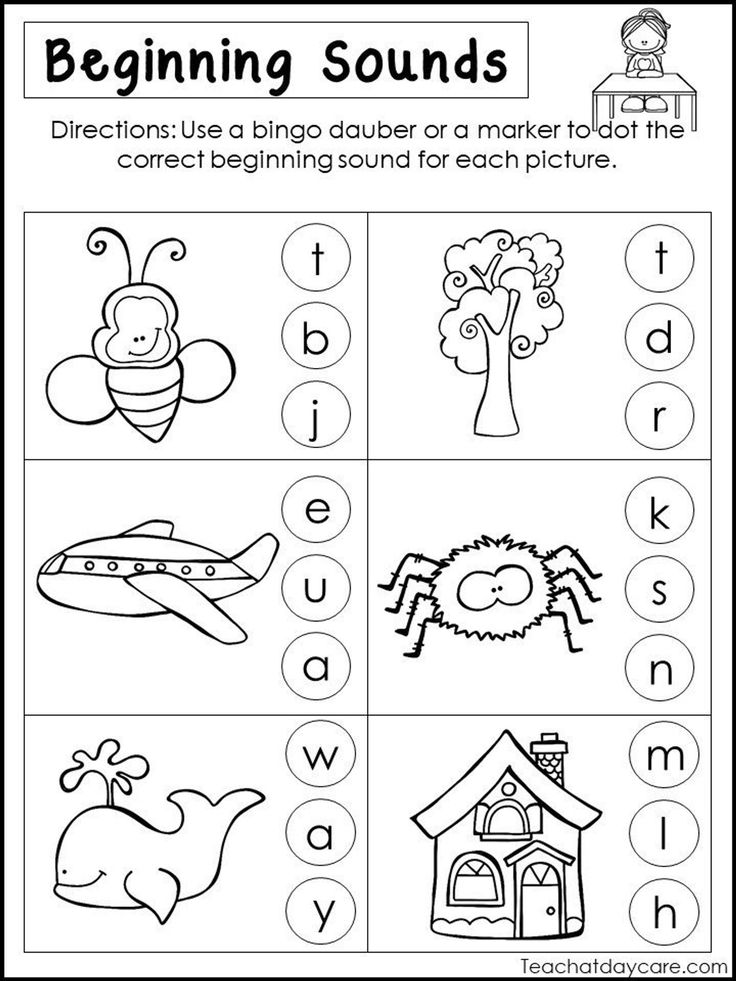
Learning vowels tasks for preschoolers 5-6 years old in a playful way
Learning to read begins with the study of letters and sounds. The kid learns them separately, and then begins to put them into syllables, and later into words. So that acquaintance with letters does not turn out to be too difficult for the baby, you need to organize it correctly. Let's find out how to quickly learn vowel sounds with your child.
How to start learning vowels
Many parents begin to teach their children the alphabet, looking at all the letters in a row, in alphabetical order. This is not the correct method. It is better to divide the letters into vowels and consonants and learn each group separately. This approach will greatly facilitate the child's task.
Start with vowels. First, explain to your child the difference between vowels and consonants. Vowels are sounds that are pronounced by the voice. They are sonorous, from which you can sing, stretch your voice.
To demonstrate to your child the difference between vowels and consonants, give him a mirror and ask him to pronounce different sounds. Let him see how the position of the mouth changes during the pronunciation of vowels and consonants. When pronouncing vowels, the mouth is freely open, the tongue lies and does not move, and the air freely leaves the throat. The pronunciation of consonants involves lips, tongue, teeth.
When the child learns to distinguish between these two groups of sounds, you can move on to a more detailed study of vowels.
Method of studying vowels
There are ten vowels in the Russian alphabet - A, O, U, Y, I, Y, E, Y, Y, E. ) cards with their image.
Letters A, O, U, Y, E write in one color, for example, red. And the letters I, Yo, Yu, I, E - in a different color, for example, blue. This is necessary so that the child learns to distinguish between "hard" and "soft" vowels.
Arrange the cards in pairs: A-Z, O-Yo, Y-Y, Y-I, E-E and show the child. Explain that paired sounds are similar to each other, only A, O, U, S, E are pronounced firmly and with a wide open mouth, and I, E, Yu, I, E have a soft sound and when they are pronounced, the lips stretch or fold into tubule.
Explain that paired sounds are similar to each other, only A, O, U, S, E are pronounced firmly and with a wide open mouth, and I, E, Yu, I, E have a soft sound and when they are pronounced, the lips stretch or fold into tubule.
Have the child practice making sounds in pairs by observing their facial expressions in a mirror.
Letter games
Children learn best through play. So turn the boring memorization of sounds into a fun game.
- Shuffle the cards and place them face up on the table. The task of the kid is to fold the cards with red and blue letters (A-Z, O-Yo, etc.) in pairs.
- Shuffle the cards like playing cards. Pull out one, show the child and ask what kind of letter is written on it. If he answered correctly, the card goes to him, if incorrectly, it is returned to you. To make it easier for the baby, first show the letters in pairs (A, then Z, etc.), and then at random.
- Draw or give a task a child to draw a house with ten windows - five in two rows.
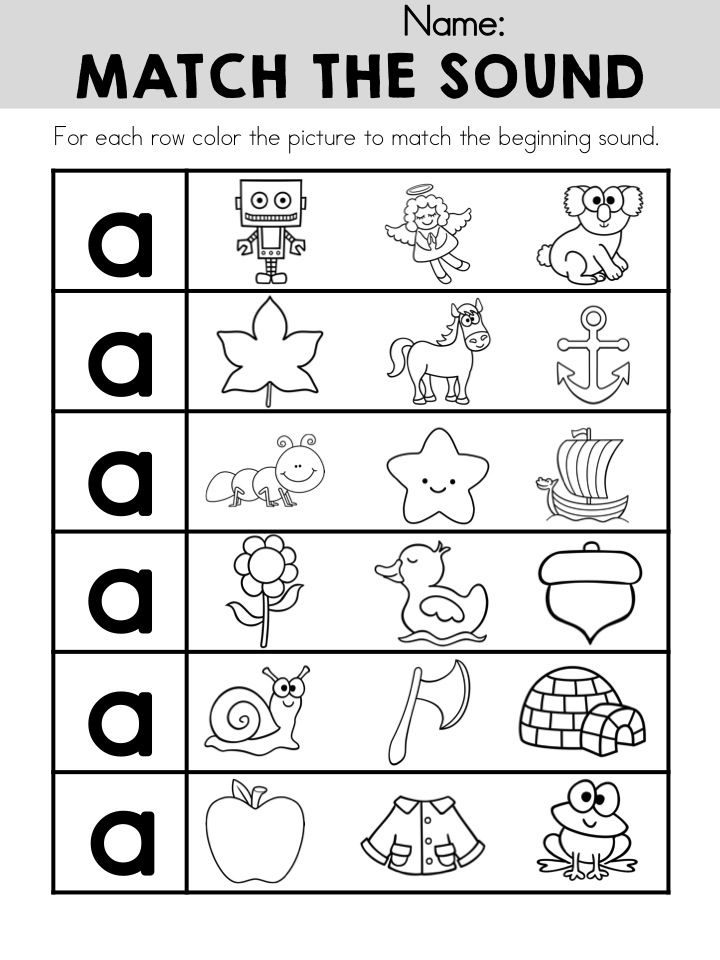 Write the letters A, O, U, Y, E in each box of the first row, and then ask the child to write in the boxes of the second row a pair for each letter. Then erase the letters and enter in the first row of boxes I, Yo, Yu, I, E and ask the baby to enter their pair in the second row. Then erase all the letters again and invite the child to enter all the pairs in both rows of boxes.
Write the letters A, O, U, Y, E in each box of the first row, and then ask the child to write in the boxes of the second row a pair for each letter. Then erase the letters and enter in the first row of boxes I, Yo, Yu, I, E and ask the baby to enter their pair in the second row. Then erase all the letters again and invite the child to enter all the pairs in both rows of boxes. - name words beginning with vowels, and ask your child to name this sound (watermelon, donkey, snail, spinning top, apple, Christmas tree, blackberry, needle, exam). Then the child must come up with words that begin with each vowel sound. Invite him to name a word that starts with Y. After unsuccessful attempts to do this, explain that in Russian this letter never occurs at the beginning of a word. Name the words in which Y is in the middle (fish, lynx, skis) or at the end (teeth, mushrooms, mountains).
- Find pictures of objects with three letters in the name , one of which is the vowel (cat, onion, cheese, crayfish, beetle, etc.
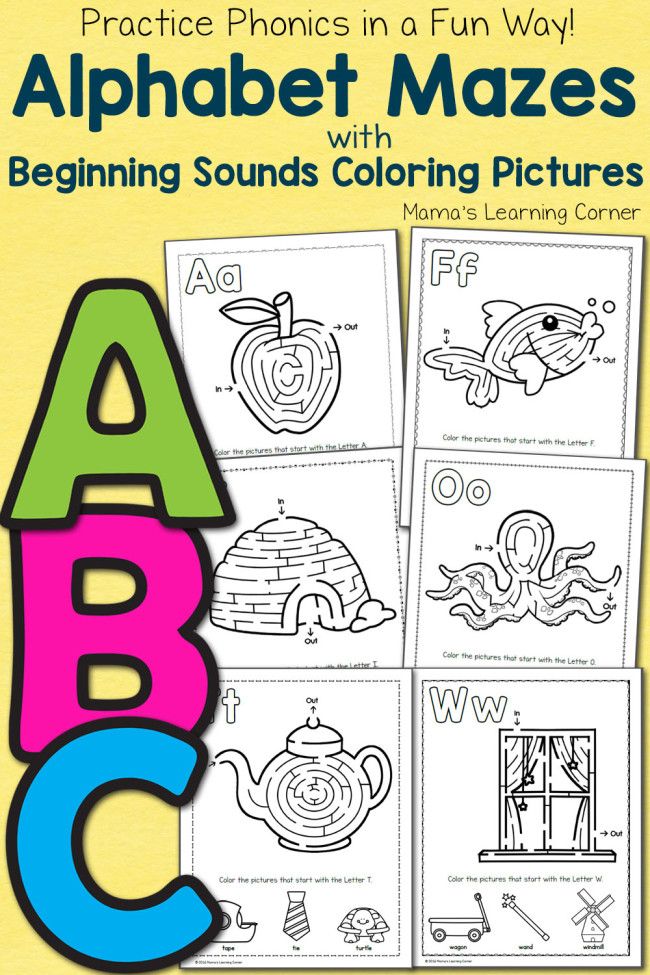 ). Ask the child to name the object shown in the picture, determine what vowel sound is in this word and where it is located (at the beginning, middle or end of the word).
). Ask the child to name the object shown in the picture, determine what vowel sound is in this word and where it is located (at the beginning, middle or end of the word). - Take a pencil and write any vowel in the air. The kid must guess what exactly you wrote.
Magnetic letters will be a good help in learning. They are bright, multi-colored, they can be attached to any metal surfaces. The kid will be happy to play with them.
Play these games every day to be effective. If the child does not want to play at the moment, do not force him. Postpone exercise for the evening. Don't do it for too long so your baby doesn't get bored. Let him look forward to the next time.
When the baby learns the vowels well, you can move on to studying consonants, composing syllables, and then to full reading. If you do not have time to teach your child to read before entering school, do not worry. First graders begin to learn to read from the first days of September.